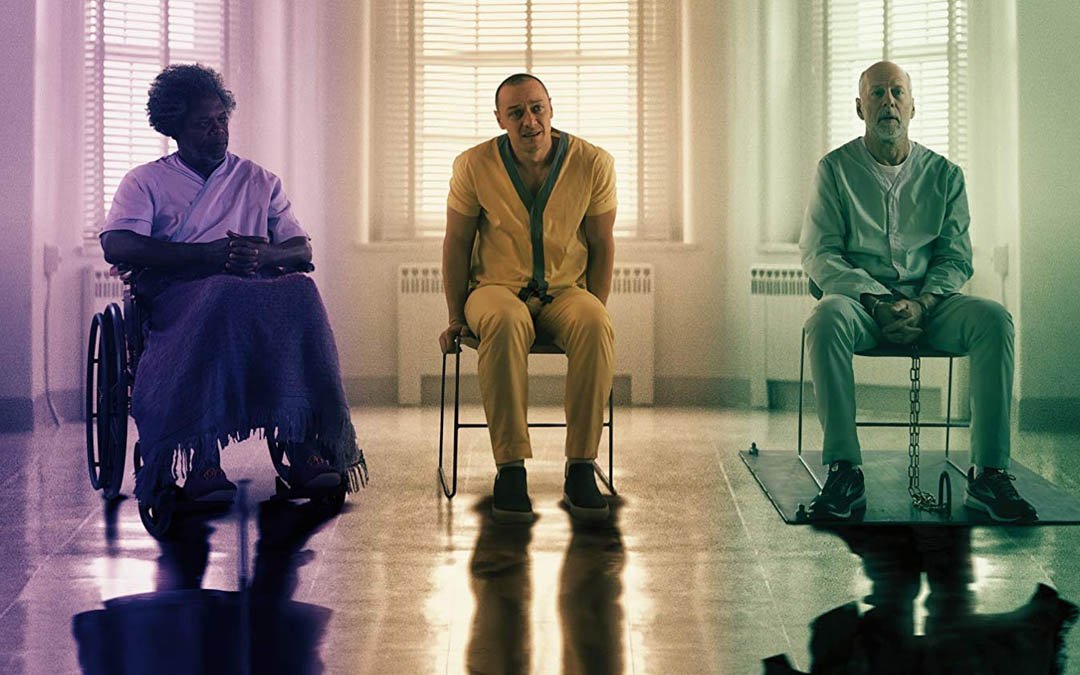The Weekend Movie Takeaway: January 22, 2019
January 23, 2019
Although early tracking suggested it would earn close to $60 million, M. Night Shyamalan’s Glass took in around $47 million over the long weekend; an impressive haul for a film that cost less than half of that to make, but not quite a triumphant return to box-office glory for the man behind behemoths like The Sixth Sense and Signs.
Both a sequel to Shyamalan’s 2000 film Unbreakable and a follow-up to Split (2017), Glass brings together the stars of both movies (Bruce Willis, Samuel L. Jackson, James McAvoy) to tell an oddly intimate story about three people in an asylum being treated for the affliction of believing they are superheroes.
The front-loaded nature of Glass’ three-day weekend gross suggests that wildly varied reactions to the film may have slowed its momentum in theaters, with word getting out that it’s a strange movie that almost seems to harbor resentment for our current superhero-dominated theatrical landscape.
To unpack the narrative implications of Glass’ moderate success, we must begin by acknowledging the degree to which the film’s writer/director has impacted modern storytelling in general.
Shyamalan's first hit, 1999’s The Sixth Sense, was so successful it gave him continuing ownership of a kind of conceptual reversal that existed long before he started making films: The term “Shyamalan-esque twist” is still used to describe any kind of narrative-rug-pull experience in a movie.
Although Shyamalan has created successful work since then, the impact of the twist in The Sixth Sense was so great it overshadowed all of his subsequent films. Audiences still go to his movies waiting for the twist, so much so that a real Shyamalan-esque twist would be for there to be no twist at all.
This level of audience awareness is difficult to overcome in a storytelling medium that heavily relies on anticipating and subverting expectations. Shyamalan has struggled with it in the past; especially in Unbreakable, which sought to de-emphasize narrative twists in favor of character, but was still primarily judged for its revelations.
A similar issue plagues Glass. Without getting too much into spoiler territory, there are indeed twisty revelations in the film (particularly in its finale), but you get the sense that Shyamalan struggled to balance those revelations with the characters’ journeys.
Glass’ turnout proves that, at the very least, Unbreakable fans did not forget their goodwill for that movie, and were excited to learn that Split was set in the same world as it.
Muted critical reaction to Glass (which isn’t without plenty of vocal fans, it should be noted) perhaps suggests that Shyamalan’s trouble balancing character, narrative and twist has yet to be resolved.
Along with The Visit (2015), Split represents a humbled Shyamalan restating his storytelling prowess following large-scale flops The Last Airbender and After Earth. Glass muddies the water of his creative comeback, but it’s important to remember that Unbreakable was highly divisive in its initial release, with its reputation growing considerably over time. Perhaps a similar fate awaits Glass, which for all its narrative messiness, definitely isn’t a dismissible film.
See you back here next week, when we will assess what impact Oscar® nominations have on the box office.
Written by: Dominic Corry
Dominic Corry is a Los Angeles-based film critic, writer, journalist and broadcaster. Raised in New Zealand, he is also the West Coast editor of Letterboxd, the social network for movie lovers. For more of his film writing, see his website www.TheGoodInMovies.com



